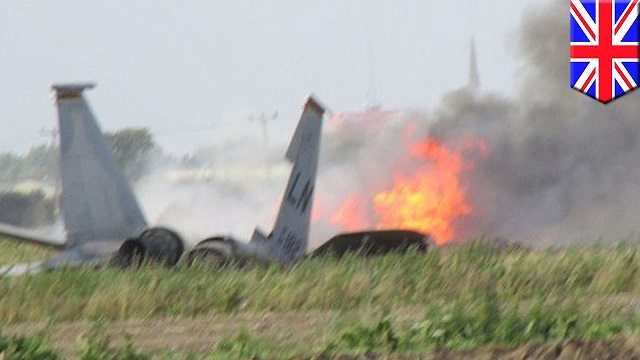For those of you who are wondering what happened to the previous entry in the series, I’ve made it private. I didn’t particularly like it, and it’s out of order. That’s the result of working on one piece for many days over a roughly one week period. It was essentially three different pieces mashed together into one not particularly coherent whole.
I’ll be re-writing it again to come after this piece, because I didn’t really get my criticism across very well, and there are a few things that I need to make abundantly clear. It needs to be stated loudly that, should these fighters actually get into the air, and if we imagined that they wouldn’t be massively outnumbered due to their absurd fuel consumption limiting the size of the fleet, then they’re fine. There’s nothing particularly wrong with them.
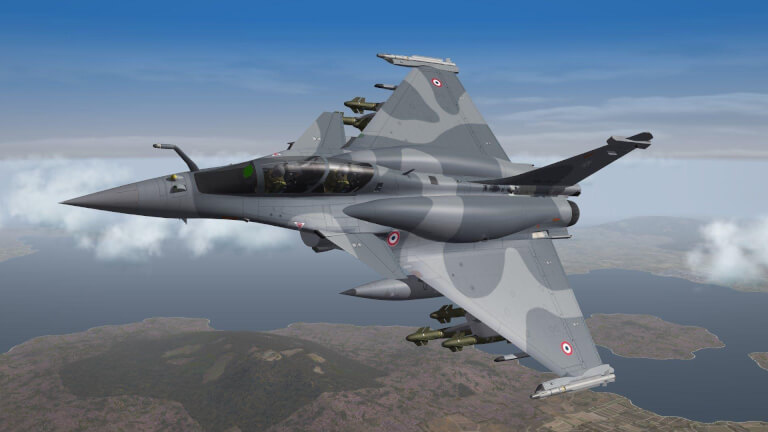
Although the conformal fuel tanks are really a drag…
The really big ones, like the American F-22 and the Russian SU-35, fly fast in cruise and can carry lots of missiles. They don’t turn particularly well in terms of retaining their speed, but they’re fine. The smaller ones, most notably the Swedish Gripen, don’t cruise particularly fast, but turn extremely well, and retain speed very well while turning. The Rafale and Eurofighter are in between. All of them are basically fine, and this series will not be about me wasting thousands of hours of my life investigating the exact precise performance of these various fighters. They’re fine.
These planes aren’t jokes because of their 1v1 or 4v4 prowess. They’re jokes because, with the possible exception of the Russian and Swedish birds, they can’t take off from anything other than perfectly pristine airbases that will be getting easily destroyed in a real war.

Ukrainian Mig-29 destroyed.
Secondly, they use absurd quantities of fuel. Their atrocious fuel consumption diminishes the size of any force that can be created. While it is true that we need a turbojet engine, yes, technically a low bypass turbofan for the pedants, they most definitely do not need to be 80,000+ lbs blimps. Building a much smaller fighter, that consumes less fuel, means we can field proportionally more fighters for the same fuel consumption.
These planes are, by their high-profit, overweight designs, going to be getting massively outnumbered by any seriously designed jet fighter somewhere between 10:1 and 4:1, at the very least. This is not simply a strategic disadvantage, but also a tactical one, and the ludicrous claim that they are so superior to relatively low profit margin designs that they can overcome the enormous numbers disadvantage is so preposterous that it’s actually kind of funny.
The rest of this series will be about destroying the bullshit that is used to justify the existence of these ultra high profit designs, by debunking the various nonsense that you will hear about them. Fake stealth, radars that magically don’t give your position away, magical missiles, slightly higher launch speeds causing enemy planes to explode, force multipliers, (fake) situational awareness, sensor fusion, and all the rest. Or at least some of it, because there certainly is a lot of bullshit.

Folland Gnat, <10,000 lbs. 1959 production. We are obviously not copying this exact design.
But to start, there is no particular reason why a turbojet aircraft needs to weight 80,000 lbs. The Folland Gnat, pictured above, had a maximum takeoff weight of just 9,000 lbs, and an empty weight of less than 5,000 lbs. Additionally, it was designed and built with an all-metal construction, and modern Carbon Fiber Composites could reduce the weight by up to about 20%.

North American F-86 Sabre. 1948 production.
Similarly, while not nearly as small, the F-86 Sabre had a maximum takeoff weight of just over 18,000 lbs, and an empty weight of just over 11,000 lbs. Again, all metal construction. And if you’re curious, it could carry over 2,000 lbs of bombs. While I don’t know what the max G load was with those bombs attached, although I’ve heard just 5G, this was not a purely guns only plane.
Armament consisted of 6 x 12.7mm machine guns with an optional offensive punch of 8 x 5 inch rockets, or 2,000 lbs of bombs held underwing.

F104 starfighter, 1954 production.
The size of the jet fighters continued to grow, although there was at least a good reason for this, that I might as well explain now. If you take a plane design, and you scale it up in all three axis, let’s say by 2x, then the plane is 8x larger in terms of weight and volume. But the performance of the plane is increased in some ways, and decreased in others.
First, the weight of the plane increased by 8x, but the lift of the plane is not dependent on the volume or mass of the wings, only the surface area. As we increase the plane in all dimensions by 2x, we increase the surface area of the wings by 4x, but the weight of the plane by 8x. As a result, our lift/speed ratio drops by half. This is why the Airbus A-380 takes off at just under 300 kmph. And yet, if you made a toy model of the A-380, with the same density, it would takeoff at far lower speeds than you can run. The same is true for all plane designs, including this adorable little Rafale in the video below.
As you scale down the planes, you increase the lift/speed ratio. This decreases takeoff and landing speeds and corner speeds, which is good. It also decreases the turn radius, and increases turn rate, which is also good. We’ll get to this later, but it also decreases induced drag for any given turn, which is extremely important for fighters, since they turn so hard. Unfortunately, there is one fairly large drawback.

F22
There is also a strong correlation between the size of the fighter, and the cruise speed. This is because, as we scale up the fighter in all three axis, we don’t increase the frontal area drag by 8x, but only 4x. Drag on a plane is not purely dependent on frontal cross section, even in level flight. We still need some angle of attack on the wings to generate lift, which generates induced drag, as well as some extra profile drag. However, provided we don’t suddenly start turning hard, the dominant aspect of drag when cruising at high speeds is the frontal cross section.
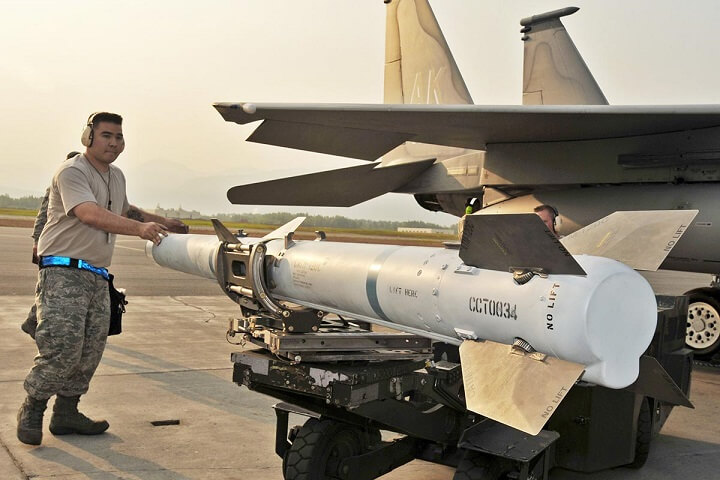
Also true for missiles, which is why they are shaped somewhat like telephone poles. The same is also true for bullets, which is why larger calibers have better ballistics.
When turning, the length of the aircraft/missile most definitely does matter, since it gets exposed to the incoming air to a far higher extent, and the extra induced drag from higher wing loading becomes much more of a factor than when producing 1G of lift.

Lockheed F-104 Starfighter.
The F-104 is a great example of a fighter built for speed and not much else. It was big for the day, being about 50-100% larger than the F-86, and had tiny little wings. Those tiny little wings brought down the frontal area drag of the plane in level flight, allowing it to go faster, at the expense of very poor handling. That may not have been worth it overall even back in the day, but there was a good reason why those planes were designed to go fast.

Russian TU-22. Supersonic. Produced 1959.
Supersonic bombers, like the Soviet TU-22, might not have been produced until the late 1950’s, and entered service in 1962, but they were inevitable and on the horizon. Nowadays we’d just fire some missiles at it, AAMs or SAMs, and then laugh, but back then the missiles were hot garbage. And similarly, ICBM’s were kind of jokes when it came to accuracy, making them fairly useless against military targets, so the supersonic bomber threat was genuine.
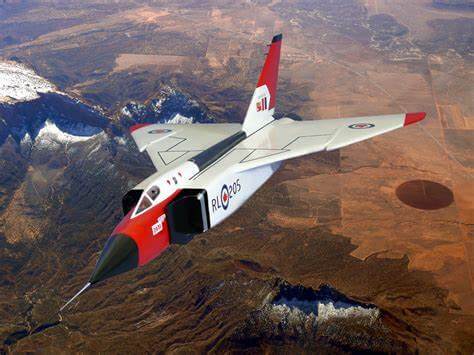
RAF Avro Arrow. > 60,000 lbs. 1959.
If you wanted to reliably destroy incoming supersonic bombers, you needed a plane that was supersonic itself, and had some short range cannons and missiles. The Avro Arrow, capable of almost M2 flight, although M0.9 cruising, fired unguided nuclear rockets at the target. It also could fire some AIM-7’s and AIM-4’s, but as we later saw in Vietnam, those missiles were hot garbage and there was good reason to rely on unguided nukes instead.
That’s not to say that the Avro Arrow was a great design or a bad design. It has special consideration for Canadians, since the Conservative government didn’t just cancel the program in 1959, but ordered everything about the program to be destroyed. Many Canadians felt like that was basically the moment Canada ceased to be a country, and started being just another economic zone and a group of peasants for International Finance Capital to exploit.

PM John Diefenbaker. Such a trustworthy face after all…
In any case, AAMs continued to be barely better than worthless even through Vietnam, with the AIM-7 having less than a 10% Pk (probability of kill).
25,000 AIM-7Es were produced, and saw extensive use during the Vietnam War, where its performance was generally considered disappointing. The mixed results were a combination of reliability problems (exacerbated by the tropical climate), limited pilot training in fighter-to-fighter combat, and restrictive rules of engagement that generally prohibited BVR (beyond visual range) engagements.

I need to quickly step in and correct this. That’s a cope from the MIC. The AIM-7 had terrible performance in Vietnam, even though it was almost entirely fired from relatively short ranges. If it was fired at targets further away, it would have had even more terrible performance. That it managed a less than 10% Pk rate when fired at short ranges, when it was promised a 90%+ Pk rate at beyond visual range is extremely damning.
The Pk (kill probability) of the AIM-7E was less than 10%; US fighter pilots shot down 59[Note 1] aircraft out of the 612 Sparrows fired.[7] Of the 612 AIM-7D/E/E-2 missiles fired, 97 (or 15.8%) hit their targets, resulting in 56 (or 9.2%) kills. Two kills were obtained beyond visual range.[8]

The early AIM-9 was better, but not by much.
The first generation of AIM-9 Sidewinders had delivered mixed results in combat over Southeast Asia. While they were the most effective missile by far used by the US military in that theater, the short range and narrow azimuth of their seeker heads gave them much less utility than expected, and when stronger heat sources than the target entered their field of view (e.g., burning vehicles on the ground, factory smokestacks, and sun glare), Sidewinders would go after these instead. The Probability of Kill (pK) ratio was also far less than predicted, with Sidewinder launches only hitting targets 25% of the time in the most favorable reports (on average, the pK ratio of all Vietnam War Sidewinder launches combined was 10%) — far from the promised 90%
Missile kill rates are also inflated, because the pilots quickly stop firing them when they don’t have any practical chance of success. So not only did these early missiles have around one tenth the promised performance, but even less than that, since the pilots had to essentially win a maneuvering fight before employing them anyway.

The point is not to take you the reader on a journey through 1960’s technology. My point is that there are some legitimate reasons to build a bigger plane. If you take a small, light design, and increase it in all axis by 2x, you give yourself a plane that is 8x bigger, consumes 8x more fuel, and necessitates 1/8th the fleet size. You will also have worse lower speed performance, and increased induced drag when turning hard.
However, you should also be cruising around faster, and have longer range. Since parasitical drag grows with the square of increased velocity, and we have half the frontal area drag/thrust ratio, since our frontal area has grown by 4x, but our thrust is 8x greater, these planes should have sqrt(2) more cruise speed, and proportionally more range, which works out to about 40% more in both areas.
If you absolutely need that speed to hunt down some supersonic bombers, because you can’t just fire some missiles at them because it’s 1968 and the missiles are hot trash, then you need that performance. If you need the speed, you need the speed. If we made a smaller plane that could no longer chase down these bombers, then it doesn’t necessarily matter that we have an 8x larger fleet, we can’t do that particular job.

Pictured: Plane not capable of chasing down supersonic bombers. Although nowadays we can just put some AIM-120’s on it and it’ll do just fine. Also, supersonic bombers don’t really exist anymore. We just use ICBM’s for that.
Beyond that, there are some fixed costs in terms of weight and drag on a fighter. We can never truly shrink a plane down by 2x in every dimension, because some things need to be of fixed size. Let’s take another look at that model Rafale remote control plane.
Bit small of a cockpit, no?
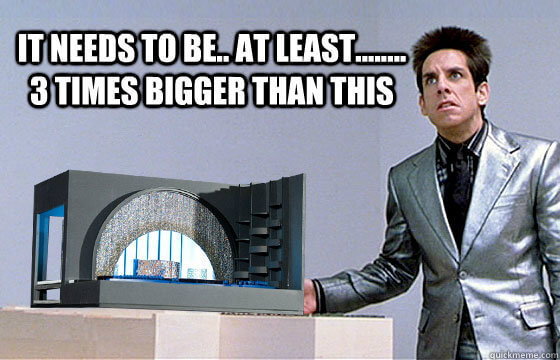
We’ll get into a similar thing with our FAC/AAR/CAS plane. If it needs to carry ~3,000 lbs of armour, it doesn’t make sense to put that on a plane that weighs less than 1,000 lbs. The same is true for missiles on the fighter. Missiles kind of sucked so much in Vietnam that they were borderline unnecessary. Making a fighter that didn’t have the structural reinforcement to carry them, and the excess weight that entails, might even have been the right decision back then. However, it’s certainly not the correct decision now, since the modern missiles are much better.

F4 Phantom. Famously unmaneuverable garbage “fighter,” from Vietnam.
Our jet fighter needs to carry at least wingtip missiles, and we almost certainly want them to carry more than that. And of course we need some internal 50 cals, if for no other reason than efficiency in hunting down helis and other planes. As we increase the size our our plane, these fixed costs in terms of weight and drag get proportionally smaller. Additionally, we get better cruise speed and range, as mentioned earlier.
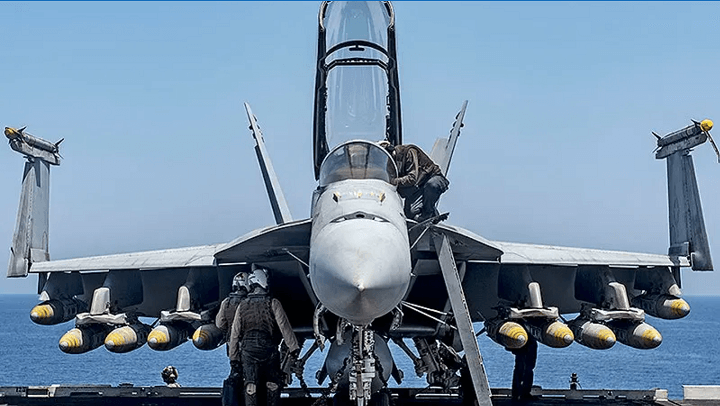
F/A-18 “Super” Hornet, utterly weighed down with bombs.
These are legitimate advantages, of course. But then again, so is having the structural strength to turn at 9.1G instead of “just” 9G. So is losing just 1kmph less while turning at 4Gs. So is carrying a single more 20mm shell for the cannon. How much something is an advantage can only be quantified through rigourous testing. The exact thing that our Liberal government campaigned on and then decided to absolutey not do under any circumstances. Instead, after a competitive bribe-off, international finance capital chose the B-35 as Canada’s new fighter.

Of course, the B-35 is just a flat out trainwreck. It doesn’t even have the high speed to supposedly justify it’s gargantuan fuel consumption through the ridiculous “missile lofting,” concept. It literally just consumes a lot of fuel and sucks.

But the B-35 is a flat out joke, and you could theoretically have a very well designed larger fighter. Here are some of the advantages of a larger fighter, assuming competent design. In fact, we’ll assume a fighter around 80,000 lbs for our large fighter, and one around 10,000 for our small fighter, as this will help us roughly quantify some things.
- Faster cruise speed of potentially around 40%.
- Longer missile range, due to increased speed when firing, much less than 40% extra range.
- Longer range, potentially around 40%.
- A bit more endurance if throttled down. (Hard to calculate due to poor partial load efficiency of turbines).
- Ability to carry more munitions by weight, although not 8x more, due to increased torque on the end of bigger span wings.
- Able to carry a bigger nose radar. (Of extremely dubious value).
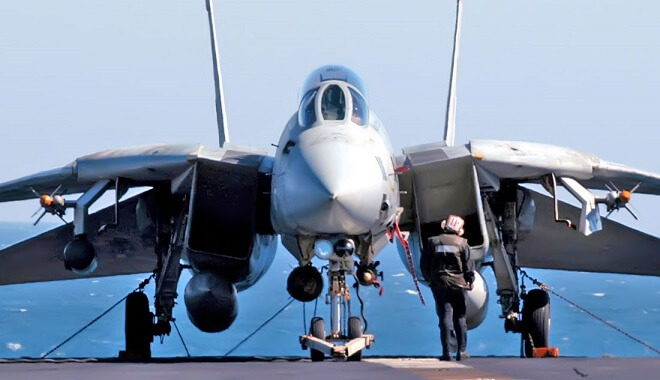
The F-14 TomKitty. Close to our theorized 80,000 lbs blimp “fighter,” LARPer. Also, a well known piece of garbage.
In contrast, here are some advantages of our small fighter, of around 10,000 lbs.
- With double the lift/speed ratio, it can pull the same Gs at 70% the speed, or twice as many at the same speed until structural strength limited.
- Lower turning radius, higher turn rate.
- Roughly half as much induced drag for any particular turn at any speed and altitude, meaning better ability to retain speed through hard turns.
- Better high altitude turning performance.
- Can be seen visually and on infrared from only half the distance.
- Can be seen on radar from only ~70% distance (I’ll explain later).
- 40% lower takeoff and landing speeds, which works out to half the takeoff and landing roll. Giving us far superior STOL and rough field performance. This is of course, not a tactical advantage, but an operational/strategic one.
- Smaller target to hit.
- Far quicker to respond in pitch and roll, for the same reasons that figure skaters tuck their arms in when spinning.

Note: The Folland Gnat, seen here, is smaller than a 10,000 lbs fighter, especially since we can save weight with modern Carbon Fiber Composites. 10,000 lbs isn’t even some sort of extreme low weight target.
Oh, and I almost forgot:
9. We get 8x more of them.
Our current blimps can’t justify their existence, since they can’t even takeoff and land outside the pristine airfields that will be destroyed during WW3. But even if they could, we would need to believe that the advantages of higher cruise speed, more missiles, and, most laughably, a larger, heavier radar, overcome the smaller, more agile fighters advantages of retaining speed better through turns, faster response in pitch and roll, greatly diminished observability in visual light, infrared, and radar, and decreased physical area to hit.
Except, they don’t just need to overcome those advantages. They also need to overcome the tactical advantage of being outnumbered 8:1.
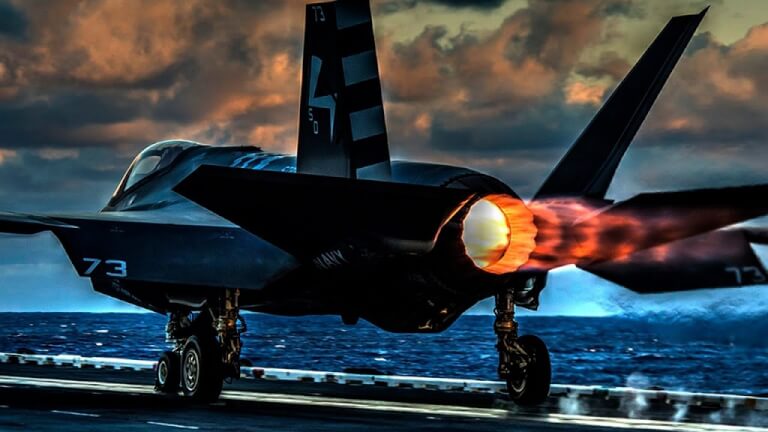
Except even that’s not good enough. Even if we can pretend that they can, somehow, manage to overcome the massive tactical disadvantage that they will inevitably face from being outnumbered, with many more fighters firing missiles at them from all sorts of angles, bleeding them out of speed and altitude, and following up for the kill, they don’t just need to do this one time, but eight times.
Because even if they could, miracle of miracles, somehow manage to destroy one of our fighters while being outnumbered 8:1, well now they get to be outnumbered 7:1. So good luck keeping that hot streak up.
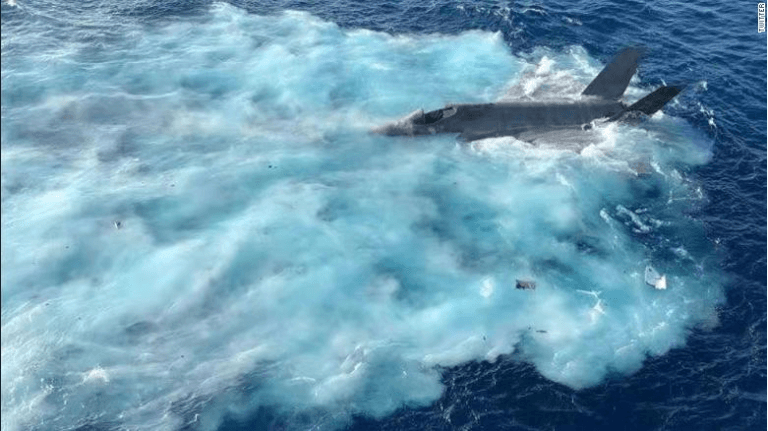
The copes from the Military Industrial Complex for how these blimps are going to do this are numerous. I’ve covered some of the buzzwords earlier, but once they’re done bloviating about the situational awareness of sensor fusion and reduced RCS combining to be force multipliers on the thirteenth generational battlezone against modern IADS it basically all boils down to one thing.
Missiles are absolutely magical and can just delete enemy fighter planes from arbitrary distances with at least like 90% probability per missile. I mean really, we’re being generous here, because it’s more like 100%. So it doesn’t matter how outnumbered we are, because those other fighters have slightly lesser range on their missiles due to cruising slower, so they’ll just like, spontaneously combust when they get within a 200 km radius of an F-22.
I mean, you could have a 100:1 advantage, and it’d be the same thing.

For people who know how missiles actually work, this is absurd to the point of satire. For people who don’t, this might sound remotely plausible. For the latter, I’ll be walking you through why this is a big bag of bullshit.
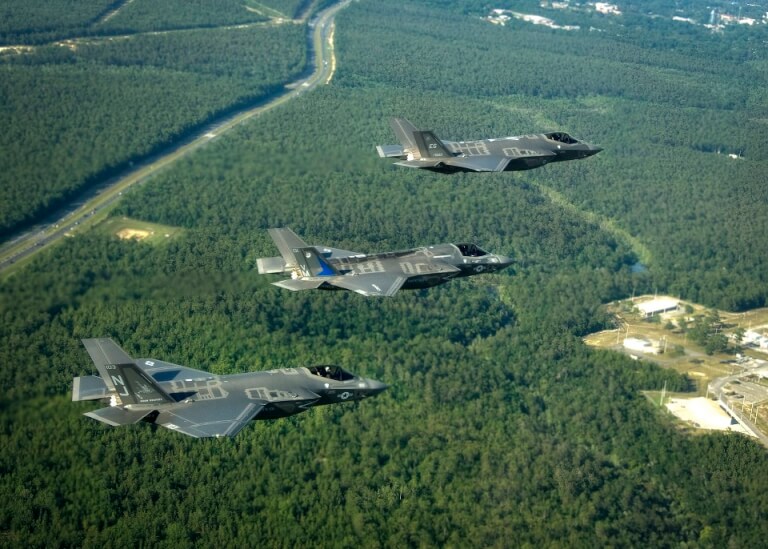
“Bro, they just spontaneously combust enemy aircraft within a certain radius. Numbers aren’t important bro.”
All you really need to know is that the size of these fighters is so large not for any actual military reason, but for the same reasons why the MIC blimped up the size of the A-10, and in recent years, put a GPS weapons guidance system on it and ground radar. None of that makes any sense for the A-10, but it’s massively profitable, which is all that really matters to these parasites.
And they do that to literally every plane. They did it to the F-16 most famously. They were forced to, by actual fighter pilots, reduce the F-15 from a 80,000 lbs monstrosity to the still overweight thing it is today at about half that size. They made the hilariously retarded F111 side by side seating “Fighter-Bomber,” that was so beyond shitty that even they couldn’t LARP like it was anything other than junk.

Lockheed’s F-111 “Aardvark.” Literally over 100,000 lbs and side by side seating. LMFAO.
Hell, they did this with the OV-10 Bronco way back in the 60’s when that plane was being developed. And then they did it again to that plane in 2013 when they wanted to bring it back. Bringing it back would have been fine, except that they were doing that to kill the A-10, as well as make heaps of money with high “tech”, but really just high-profit garbage added to the plane.
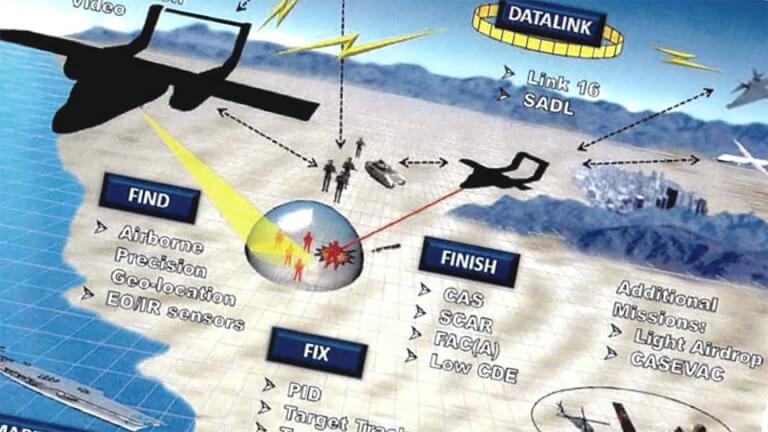
LMFAO.
These planes are enormous because the extra, and unnecessary garbage that are extremely high profit, like a giant radar or GPS guided bombs, add tons of extra weight. And with planes, adding some weight doesn’t simply add that weight, there is a weight spiral that forces extra weight all throughout the rest of the plane.
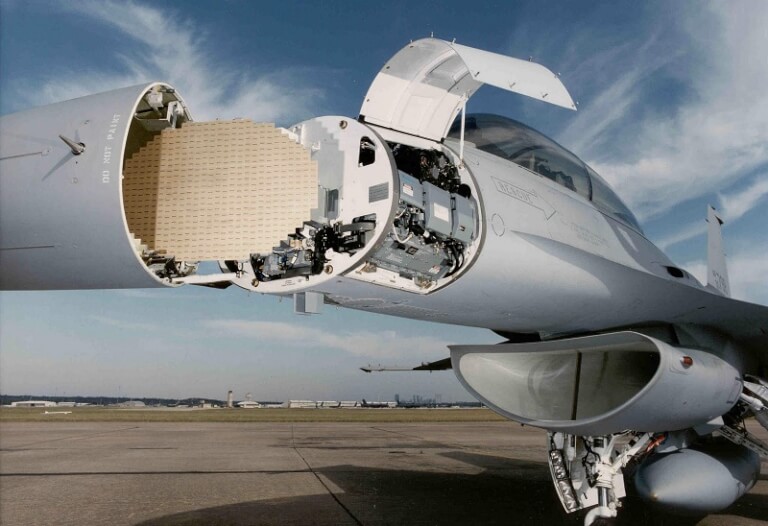
How many millions do you think that radar costs? Now, what do you think it costs to manufacture?
We saw with drones, which are shitty little planes with shitty little cameras, that the Military Industrial Complex absolutely loves “high tech,” stuff, because it allows them to justify pricetags that are utterly divorced from manufacturing costs. That’s the real reason why these planes are absolutely gigantic. It’s not their ability to do strikes against concealed targets in the high threat IADS battlespace through sensor fusion and extreme Situational Awareness, but rather their ability to do strikes against the taxpayer and put money into the pockets of Lockheed Martin, General Dynamics, Raytheon, and the rest.

Formula 1 racecars are the product of serious, hard-won engineering and manufacturing. These teams have budgets of over one hundred million dollars per year, and they use that to scrape out tenths of a second over one another by eaking out the very last bit of performance from the engines, tires, suspension, downforce, other aerodynamics, and everything else. And of course, they have to balance every bit of the car with every other bit of the car, to make sure that it all works seamlessly together.
And we know which teams did the best, without any bullshit. After all, they compete against each other every two weeks, and there’s no getting around one car being slower than another. There are no copes about “muh stealth,” or any other bullshit. We can see which cars are the best due to serious competition. In contrast, Lockheed Martin executives cry and shit their pants when you suggest so much as putting our fighter pilots in the plane to let them see what they think about it.

People really need to get over this idea that these jet fighters are the product of serious, competitive engineering and are touching perfection on what a fighter plane can be. These are some of the most wasteful and bullshit government projects out there. This idea that you’re getting hyper-competence from these corporations is so absurd that I honestly get a sort of out of body experience when I read people in our thing defending this garbage.

I’m sure they’d like you to believe that they have entire teams of hyper-intelligent engineers obsessing over relatively trivial details of the planes in order to extract the maximum performance, just like the F1 engineers do with their racecars. But no, they just bribe politicians and have big propaganda teams that exist so they can add random “tech,” nonsense that is unhelpful and irrelevant at best. They’re just parasites.

That’s why these “fighters,” are sold to the public with enough buzzwords to make a heeb sociology professor embarrassed. And then they desperately try to stop any sort of competitive fly off.

In the next piece, which some of you may find familiar, since it’s essentially the piece I already wrote, but modified, I’ll explain what we would build instead of fighter planes, if the various bullshit about missiles was actually true. For now, enjoy this video of DCS Satal, and a competitive 4v4 match in DCS World.
I’m not verifying the exact precise numbers produced by Heatblur’s flight models in that sim, far from it, but if this is all sounding a bit too abstract for you, just take a look at this kind of stuff and have it in the back of your mind as we continue this series, because a video can be worth a thousand words.
The long and short of it is that missiles don’t make outnumbering your opponent less important, they make that more important, unless we’re talking about magic missiles with no relationship to reality. We’ll get into why in the next installment.

